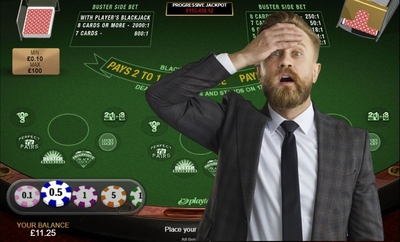 Before we get into this, we should point out that everyone is at different stages when it comes to their blackjack skill and experience.
Before we get into this, we should point out that everyone is at different stages when it comes to their blackjack skill and experience.
This article isn’t being written to make new players feel bad or to teach veteran players how to suck eggs, it is simply here to help whoever might need it.
Some of these mistakes will seem blindingly obvious to many readers, but will be a complete revelation to others who have maybe only just started playing.
We are none of us perfect, and most of us aren’t mental math magicians either, so this article is aimed at anyone and everyone, whether they have been making all of these mistakes or just one or two of them.
That said we will try and split them into broad categories, to make it easier to see where you fit in and find the tips that might help you the most.
Beginner Mistakes
Playing at a 6:5 Table
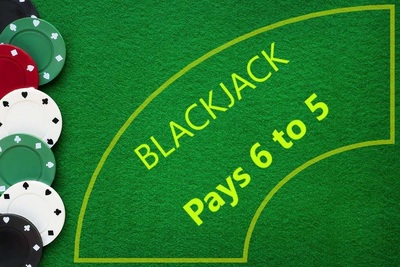 This is a really easy one to fix.
This is a really easy one to fix.
On most tables, when the player gets blackjack they are paid out at 3:2 rather than 1:1 for any other winning hand.
However, some casinos and online game developers have created variations that pay out at 6:5 instead of 3:2.
It probably doesn’t seem like much of a difference unless you sit down and work it out, and some people are even fooled into thinking it’s a better deal because the numbers are higher, but a £10 bet paid out at 3:2 vs a £10 bet paid out at 6:5 looks like this:
- 3:2 – £15
- 6:5 – £12
So you see, over time, this all adds up in the casino’s favour and keeps money out of your pocket.
Essentially, 6:5 tables are a bit of a rip off and you should avoid them like the plague, as playing at them just gives the casino more of an edge over you.
Taking Insurance
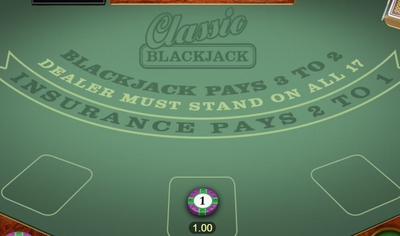 Another tricksy ploy by the casino to take more money off you, and another mistake that is really easy to fix.
Another tricksy ploy by the casino to take more money off you, and another mistake that is really easy to fix.
Simply put: never take insurance.
It’s a bad deal whichever way you look at it, so no matter how often it is offered to you, you should politely decline it every single time.
Insurance will be offered if the dealer is showing an Ace as their up card, the thinking being that they could easily have blackjack which would win them the hand.
At a cost of half your initial bet, you can insure against this outcome and the insurance bet pays out at 2:1 if the dealer reveals a 10 in the hole.
In this situation you would lose your initial bet but win the insurance bet, which, at 2:1, would cover your losses and leave you even. Phew! Right?
Well, only if the dealer does in fact have blackjack, which statistically, they are only likely to have 4 times out of 13. The other nine times they will not have a ten value card in the hole and the insurance bet will be lost.
The house edge for most blackjack games is around 0.5% assuming you play basic strategy, but the house edge for the insurance bet is a crazy 7.69%.
Why would anyone place an insurance bet after finding that out?
(If you are a card counter you might be able to strategically take insurance if the count it high, but that’s another story).
Playing Side Bets
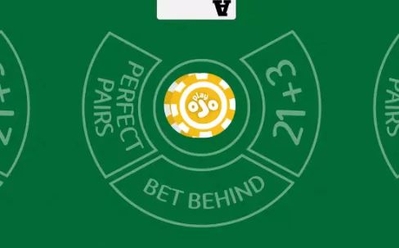 Many blackjack games have side bets such as Perfect Pairs or 21+3.
Many blackjack games have side bets such as Perfect Pairs or 21+3.
These are kind of like mini games in their own right, that use the cards dealt to determine the result, but do not impact on the game of blackjack itself.
For example Perfect Pairs is a bet that your first two cards dealt will be of equal value, so that side bet is done and dusted as soon as those first cards are dealt.
Whether you in or lose a side bet the game of blackjack plays out as usual, so you can win one and not the other, or win both, or lose both.
The point is though, that all side bets have a much higher house edge than blackjack.
They might be fun, but they are only there as a distraction and to make the tables more profitable for the casinos, so if you are trying to make money, they are best avoided.
Not Checking the Table Rules
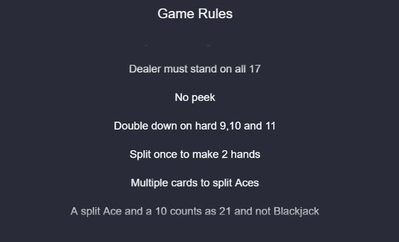 If you are a real beginner, you might not know that different tables or online game variations might play around with the rules.
If you are a real beginner, you might not know that different tables or online game variations might play around with the rules.
We already know that some games have changed the payout for blackjack, but did you know that rules regarding doubling and splitting can also be different depending on where you play?
Sometimes you can split more than once, sometimes you can double after splitting, and the rules about what happens after splitting Aces are another common area that is tweaked.
If you can double on any hand total that is preferable to only being allowed to double on hand totals of 9, 10, and 11.
What about the surrender rule, is that in play at the table you are looking at?
Table limits are yet another consideration; you don’t want to sit down at a table with high limits if you are only just starting out and have a smallish bankroll, that could wipe you out in no time in a worst-case scenario.
The other important thing to check is the dealer rules. Generally the dealer hits up to 16 and stands on 17, however that total is achieved.
However, some games have tweaked the rules so that the dealer hits on a soft 17 (a hand containing an Ace), which is less favourable for the player.
All these little things can add up, so checking the rules of the table before you play is a must.
Intermediate Mistakes
Misusing Hand Signals
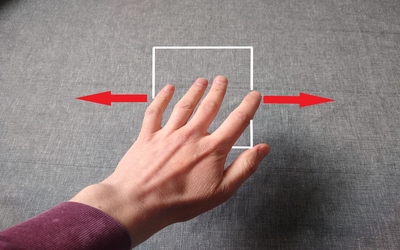 You don’t have to use sing language if you don’t want to, and obviously this is not possible if playing online, but if you do use it you better get it right.
You don’t have to use sing language if you don’t want to, and obviously this is not possible if playing online, but if you do use it you better get it right.
You can’t just use your own hand gestures and expect the dealer to know what you are talking about, so you need to learn to accepted form of sign communication if you want to be extra lear about your decisions.
We have an article on hand signals here, so we won’t repeat ourselves, but we would say that you shouldn’t try and use hand signals until you are very confident with them.
Usually, you shouldn’t be touching the cards in any case, and will be told off if you do, and although you can touch the table you should be careful with any gestures as you are telling the dealer what you want to do.
Don’t wave your hands all over the place as it may cause confusion; either learn the proper hand signals or keep your hands out of the way.
To make things more complicated, there are some casinos in some parts of the world where you might be able to hold your cards (it’s very rare these days) and the signals are different when this is the case.
Splitting Incorrectly
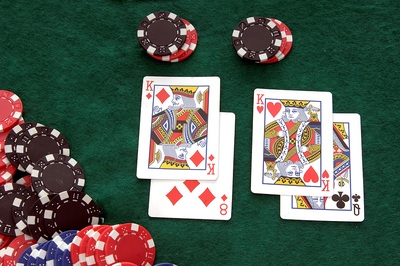 Splitting is a useful way of improving your chances in a game of blackjack, but you must do it correctly.
Splitting is a useful way of improving your chances in a game of blackjack, but you must do it correctly.
The right decision will depend on the hand you have available to split and what the dealer’s up card is showing, but there is a mathematically optimal move in every situation.
A few basic mistakes that players who are still learning sometimes make, include splitting tens.
It might be tempting to split tens because it’s a great first card in a regular hand, but if you have a pair of tens you have a very good hand of 20.
Even if the dealer is showing something like a 5 or a 6 and you split hoping they will bust and you will get double the profit, statistically you are doing yourself a disservice.
Statistically, you are much more likely to win with 20 than with two new hands both starting with a 10, so the golden rule is to never split 10s. The same goes for 5s and 4s while we are at it, never split them.
Equally as golden a rule, is to always split Aces.
A hand of two Aces can be worth 2 or 12, so it’s a tricky hand to turn into anything useful. However, the Ace is the most powerful card in the game, so creating two new hands that both contain an Ace is very useful indeed.
Regardless of the dealer’s up card, you are always better off splitting Aces, it’s one of the easiest rules to remember and therefore an easy mistake to avoid.
You can learn more about playing the optimal way here.
Trying to Get 21
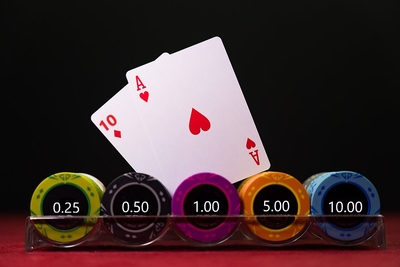 To a beginner this might sound ridiculous, but although the object of the game is to get as close to 21 as possible without going over, you can win in other ways.
To a beginner this might sound ridiculous, but although the object of the game is to get as close to 21 as possible without going over, you can win in other ways.
Remember, you are playing against the dealer’s hand first and foremost, so your primary objective is to beat their hand, not to get 21.
A classic example of this kind of mistake is when a player’s hand is worth 12 and the dealer is showing a 5.
Many new players would hit, but the logical thing to do would be to stand.
This is not because you have a good hand, but because the dealer will have to draw a minimum of 2 cards to hit their required minimum total of 17, and this gives them a decent chance of busting. If one of those 2 cards is a 10 value card they will almost certainly bust.
On the other hand, if you hit with a 12, you run the risk of getting a 10 value card and going bust too, so why take the chance?
Basically, the dealer has a higher chance of going bust than you have of improving your hand, and even if you did improve your hand, you have taken an unnecessary risk because the dealer will still have to take 2 cards regardless.
The crux of it is, you need to know when to try and beat the dealer, and when to let the dealer beat themselves.
Advanced Mistakes
Standing on Hard 12 with Dealer Showing a 2 or 3
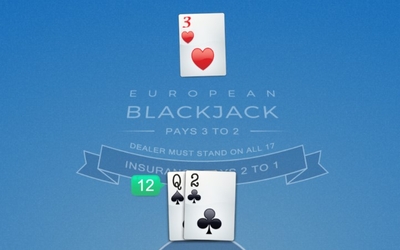 It’s true that standing on 12 is often the right thing to do when the dealer is showing a lower card, because there is a higher chance of the dealer going bust than of you improving your hand.
It’s true that standing on 12 is often the right thing to do when the dealer is showing a lower card, because there is a higher chance of the dealer going bust than of you improving your hand.
However, while this is true up to a point, when it comes to 2s and 3s, you should actually hit on a hard 12.
This is because the dealer’s up card is low enough to give them enough of a chance to hit twice without busting.
Plus, there are 3 times as many cards in the shoe that can improve your hand than would make you go bust.
It’s only just the right call which is probably why the mistake is made, but statistically you will win more often by hitting the hard 12 and then seeing where you end up, than you will by standing and hoping the dealer goes bust.
Standing on a Hard 16 with Dealer Showing Ace
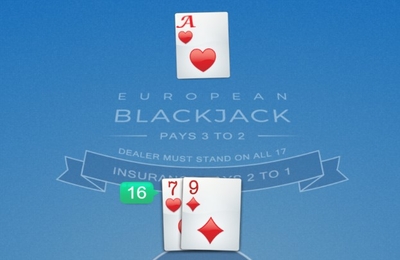 A 16 is a horrible hand total to have, because if you hit it, you are fairly likely to go bust, but if you don’t then you are stuck with a weak total.
A 16 is a horrible hand total to have, because if you hit it, you are fairly likely to go bust, but if you don’t then you are stuck with a weak total.
When the dealer has an Ace though it should be an easy choice to make, even if it feels odd.
The Ace is the most powerful card in the game, and the chances of the dealer beating your 16 are so high that your only logical option is to get tough and hit, hoping for a low value card to improve your hand.
That said, if surrendering is an option this should be the route you take, as you get half your stake back and can move on to the next hand immediately.
Doubling on 11 with Dealer Showing Ace
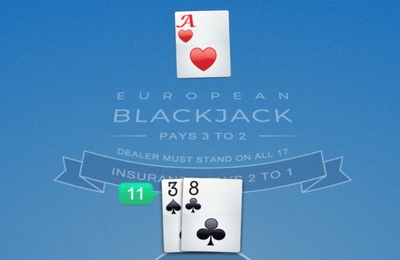 In most circumstances doubling on 11 would be a smart move, because your next card cannot make you go bust whatever it is, and if it is a 10 value card then you will be on 21 and very hard to beat.
In most circumstances doubling on 11 would be a smart move, because your next card cannot make you go bust whatever it is, and if it is a 10 value card then you will be on 21 and very hard to beat.
However, if the dealer is showing an Ace as their up card then things are different.
This is one rare occasion where doubling is a bad idea, because if the dealer’s hole card is a 10 value card then you are just throwing more money at a losing hand, and given how many ten value cards there are in the shoe, it’s not a chance worth taking.
That said, if you happen to be at a table where the dealer hits on a soft 17, then doubling is still (just) worth the risk, but otherwise don’t do it.
This is another one with very fine margins, but statistically it is a mistake you should avoid making.
Standing on Soft 18 With Dealer Showing 3 – 6
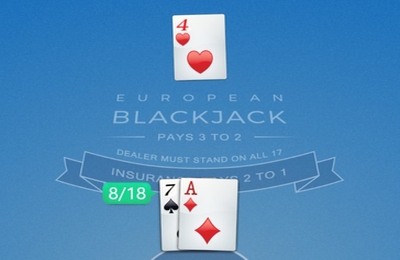 It’s important to emphasize that this only applies to soft 18s; i.e a hand of 18 that contains an Ace. If you have a hard 18 then just stick with it.
It’s important to emphasize that this only applies to soft 18s; i.e a hand of 18 that contains an Ace. If you have a hard 18 then just stick with it.
A soft 18 though is actually impossible to go bust on, because the Ace can be used as a 1 or an 11, and the dealer is fairly likely to go bust based on their up card.
So if you double down in this situation you get more money on the table which will therefore boost profits, but you can do that without any risk of going bust.
The chances of the dealer busting are just as high whatever you do (assuming their up card is no higher value than 6), so this is a situation where you might end up with a lower total value, but the same chance of winning the hand and with more money at the end of it too.
It’s not impossible to lose the hand we should add, but your chances of winning are much higher than the dealer’s, so take advantage.
Standing on Soft 18 With Dealer Showing 9
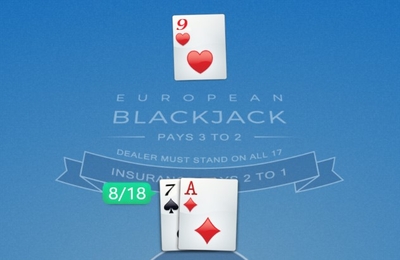 That soft 18 is back again, but this time the optimal play would be to simply hit it, as crazy as that sounds.
That soft 18 is back again, but this time the optimal play would be to simply hit it, as crazy as that sounds.
There are a lot of 10 value cards in the shoe so the chances of the dealer ending up with 19, which would beat your 18, are fairly good.
Therefore, hitting is the optimal choice based on probability over the long term.
Although this mistake will feel very wrong to correct, if you stand you are likely to lose more money over the long run than if you hit, because the few occasions where you win this hand after hitting will counter balance the many occasions when you don’t.
Wrapping Up
Of course, these aren’t the only mistakes players make when playing blackjack, but they are some of the most common and many are very easy to correct.
Every aspect of your game that you tighten up claws back some of that house edge from the casino, and therefore makes you a stronger opponent for the dealer.
You might sometimes see professional blackjack players making these ‘mistakes’ on purpose, but chances are they will be playing at such a high level that they have their own finely tuned strategy and know exactly what they are doing.
Like they say, you need to learn the rules before you can break the rules, and for players trying to improve their game who have not yet reached GOAT status, these are some mistakes to avoid.
